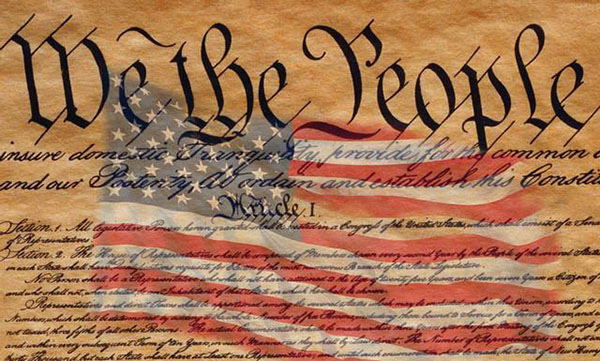Brief summary of the principles of the American Constitution. A definition and example is provided for each principle.
The Declaration of Independence was signed in 1776. The United States a nation in its infancy now needed to create its government. The predecessor to the current Constitution was called the Articles of Confederation. Because of its many flaws the Articles of Confederation was replaced in 1787 at the Constitutional Convention in Philadelphia Pennsylvania. There are seven principles that the Constitution of the United States of America is based on. Every one of its seven articles will refer back to at least one of these principles. Understanding the Constitution is impossible without understanding the basic principles that it was created from.
Popular Sovereignty
“We the people…” the first three words of the preamble to the Constitution describes the essence of popular sovereignty. The power in the government of the United States comes directly from the people. This is a simple concept and one that is the basis of any democratic form of government. Article one of the Constitution covers the legislative branch of government which is directly elected by the people. The legislative branch is the only branch of government that can create the laws which govern the people of the United States of America.
Limited Government
Limiting the power of government was extremely important to the founding fathers who had just overthrown a tyrannical king. The government of the United States is limited by our written laws. The principle of limited government is seen throughout the constitution. For example the first amendment to the Constitution, which is freedom of speech, forbids the government from controlling what people say or write.
Separation of Powers
The constitutional principle of separation of powers refers to the division of powers within the government. This separation of powers creates a government in which there is no concentration of power in any one branch, power is equally divided. The United States has three branches of government; legislative, executive, and judicial. The legislative branch is responsible for making laws while the executive branch carries out the law, and the judicial branch interprets the law.
Checks and Balances
The principle of checks and balances is closely related to separation of powers. This principle explains the concept of each of the three branches of government having the authority to check the power of the others. The president checks the power of the legislative branch by vetoing bills, the legislative can then check his power by passing the bills with a 3/4th majority, while the judicial branch can checks the power of the legislative branch through declaring a law unconstitutional.
Individual Rights
Individual rights are a principle of the constitution which is dealt with primarily in the Bill of Rights. When the American Revolution ended and the new nation was developing its government many citizens were worried that their individual or unalienable rights would be trampled on by the new government; just as they were trampled on by King George the III. Ratification of the Constitution was made possible by adding the Bill of Rights which is the first ten amendments to the Constitution. Most of these amendments deal with basic human rights such as freedom of speech, the right to bear arms, and no cruel and unusual punishment.
Federalism
Federalism is the principle of the constitution which splits power between a national or federal government and the local governments. This principle is important because the Articles of Confederation failed because there was no strong central government. Without a strong central government countries are weak and vulnerable. Federalism creates a strong central government while maintaining strong state governments as well which are necessary to handle regional problems.
Other Principles
There are some principles of the Constitution that are sometimes left out because they overlap or because writers do not want to include them. One is republicanism. This principle refers to the fact that the United States does not have a direct democratic government but a republic where people vote for representatives who then make the decisions for them. Another principle sometimes mentioned is judicial review. This principle overlaps with checks and balances because it refers to the power that the Supreme Court has to declare laws unconstitutional.








